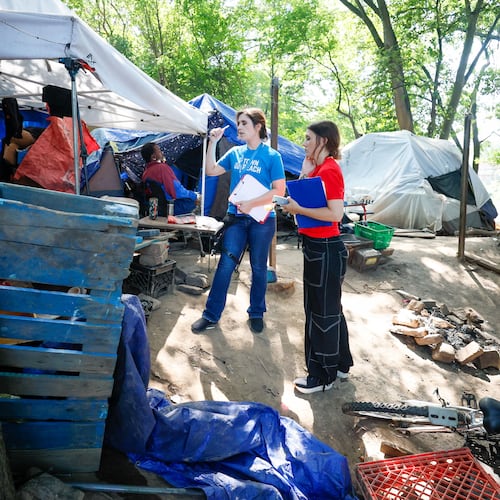This may be like the traffic version of Christmas morning, as the I-85 bridge is finished and re-opening. After six weeks of trying new routes, telecommuting and taking transit, Atlanta is eager to jump back in the saddle of its old rush hour ways. While this I-85 bridge is absolutely vital to our busy network of roads, we must not forget the lesson learned this last month and a half: our transportation has to be more versatile.
Fittingly or ironically, depending on your views, plans surfaced just before the I-85 opening about some long term plans to add capacity to the Downtown Connector/I-75/85. These lofty (or deep) conjectures include tunneling beneath the freeway and adding an entire new road. This is just an idea on the table that engineers can study - much like the idea of making it a double-decker interstate. But jumping on the Driller Mike train so quickly negates what we have learned since the March 30 catastrophe on I-85.
Atlanta is far too reliant on vehicles and roads and while local transportation officials need to make sure our infrastructure is updated and repaired, putting too many eggs in that basket will set us behind. Suburban leaders 40 years ago (and some ever since) rejected plans to build MARTA into their areas. The flaws of those decisions haunt the commutes on I-85 and I-75 through the northern suburbs every weekday.
Instead, the paved Atlanta infrastructure kept expanding. But the population grew faster than the roads grew. And the population sprouted further and further away, up to areas with only two-laned interstates (see: I-85, north Gwinnett and GA-400, Forsyth County). Of course, this has led to the daily headaches we see each day, which makes a metro Atlanta commute one of the worst in the nation.
MARTA has experienced big ridership increases the last few weeks since the closure, but the sudden rush of riders was a bit more than the mass transit system could handle. MARTA took a couple of weeks to get a handle on the parking surges at stations at the end of its lines. And the busing system to take riders to these stations is woefully inadequate, because demand had been so low for so long, before the surge. Atlanta needs MARTA to grow, to help properly transport the ever-expanding populace.
Road projects persist all over the state and metro Atlanta area: The I-75/I-575 Northwest Metro Express Lanes, the Transform 285/400 interchange rebuild, the new I-85 HOT lanes in north Gwinnett, just to name a few. We have to keep moving forward with these, of course, because the automobile will always be our most-used form of travel.
And something must be done about the ridiculously slow traffic on the Downtown Connector. This tunnel idea might be great. But let’s not be so hasty as to quickly invest too much of our mental energy in what will be probably be a project with more zeroes behind it than the lanes the Connector has in one direction. Traffic on I-75/85 improved to some extent during the I-85 bridge closure - those folks had to go somewhere else. If Georgia can first invest in making those alternate modes better, the Downtown congestion solution might be significantly cheaper and possibly more effective than the tunnel.
About the Author
The Latest
Featured


